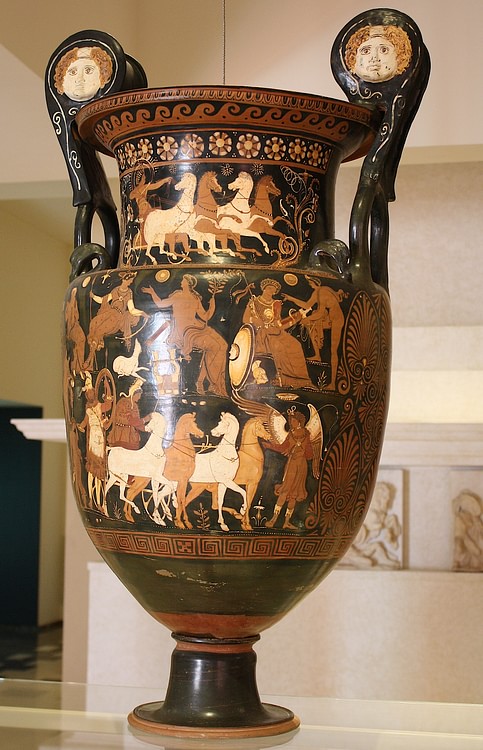
Although there were no built features to denote the spot of the burials, the individual components associated with them certainly match elite burials in Macedonia, namely metal urns, purple cloths, gold wreaths, and decorative gold attachments.

Despite the existence of the large necropolis, three burials were discovered in the area of the sanctuary of Eukleia, in the public sector of the ancient city, a few years ago.

Among the numerous tombs, some are characterised by impressive architectural design and grave goods of great artistry. The firing was stopped before the slip turned red once again.An extensive necropolis has been brought to light at Aegae, the first capital of the Macedonian kingdom. The fresh oxygen supply turned the pottery back to red. The kiln was then starved of oxygen and filled with carbon monoxide (by using wet fuel), causing the slip to turn black. Careful control of the firing process allowed Greek potters to oxidise the body of the pot, turning it red, by keeping the kiln well ventilated. The vase is decorated in the 'red figure' technique in which the areas surrounding the figures are painted in a slip (mixture of clay and water), leaving the red pottery showing through. These formed the nucleus for Hope's own collection of vases, which he displayed at Duchess Street. In 1801 Hope purchased the second collection of ancient vases formed by Sir William Hamilton, formerly the British Ambassador to the Naples court.

(1807), illustrating objects he had designed for his London house at Duchess Street. The most important of these publications was Household Furniture and Interior Decoration. The vase was once owned by Thomas Hope (1769-1831), the collector, connoisseur, patron and designer, who published a number of influential books of designs. The krater was an ancient Greek vase with two handles that was used to mix wine and water.


 0 kommentar(er)
0 kommentar(er)
